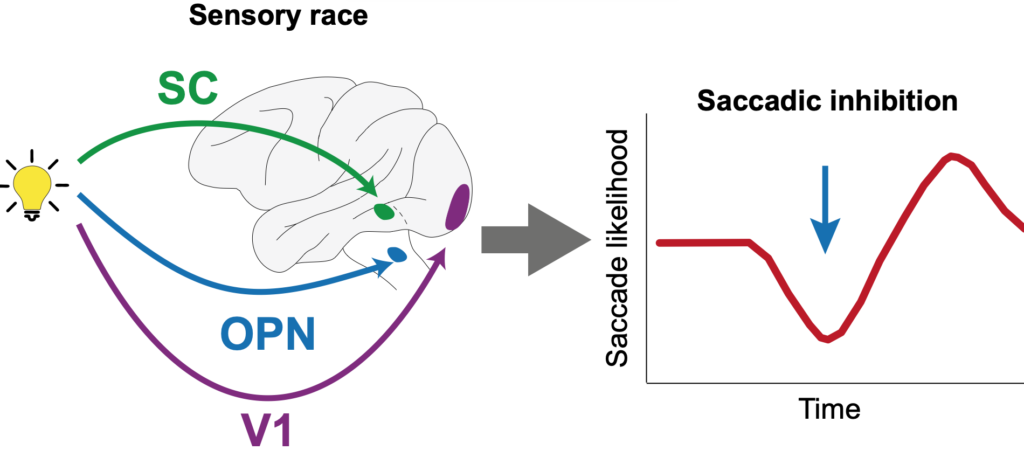We have an exciting new paper published in the Journal of Neurophysiology! The paper appears in the Special Collection titled “Now and Then“, featuring “articles that compare how our concepts, ideas, and methods have changed in the neurosciences“.
In our paper, we explored a highly ubiquitous phenomenon in vision science: every time a sensory transient happens, the likelihood of saccades drops to almost zero very shortly afterwards (with a latency of <100 ms). This phenomenon, called saccadic inhibition, seems to be obligatory, and even precedes reflexive orienting responses towards the appearing stimuli in the overwhelming majority of the time. However, the neurophysiological basis for this phenomenon has not been fully revealed yet.
Most current models assume that saccadic inhibition occurs because of lateral inhibitory interactions in sensory-motor brain structures like the superior colliculus (SC) or frontal eye field (FEF). However, and as summarized here, our previous attempts at testing these models have shown that saccadic inhibition is not abolished with either SC or FEF inactivation.
In our new article, we provided an alternative perspective to the neurophysiology underlying saccadic inhibition. We suggest that sensory information must arrive very quickly to late oculomotor control areas in the brainstem. This way, these areas both sense the environment rapidly and also can efficiently exert an influence on saccade generation. Our article summarizes the multi-faceted neurophysiological and behavioral evidence that we have for supporting this idea.

An intriguing additional outcome of our article is that it alerts the community to the inevitability of saccadic inhibition. The phenomenon reflects a resetting of the active vision cycle that is perpetually occurring in our brain. Often, in experiments, we control stimulus timing and properties very well. However, such control is fundamentally external to the brain. The brain has its own internal rhythm, and stimulus onsets in the environment necessarily come completely asynchronously with respect to this rhythm. Thus, for the brain to correctly react to exogenous events in the environment, it must possess a mechanism for first resetting its rhythm and getting ready to analyze these external events. We think that saccadic inhibition reflects exactly such resetting, and we also think that this perspective is important to have in a large swath of vision science studies.

